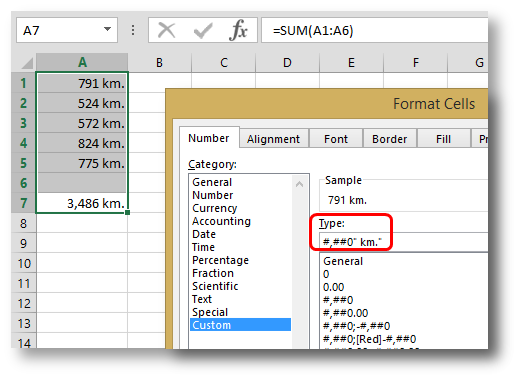

The # sign is used as a placeholder, meaning that if there are no 10's, 100's, or 1000's, don't display them.ĭisplay Units Without Converting to Text Format Code This does not convert the value to text - it is only a display format.ĭisplay values using commas to separate thousands, millions, etc. Display Leading Zeros and Include Commas Format Codeĭisplay values with leading zeros. NOTE These are very useful for chart axes and labels. (Quotes) Used to display whatever is contained within the quotes as text, such as 0.00 "feet"įull month name (January, February, etc.)įirst letter of the month (J, F, M, etc.) Used for fractions such as #/12 or as the / character for dates See the section below about using color codesĬonditional operators (valid only in the Positive and Negative sections) (Asterisk) Repeats the next character to fill the cell (Comma) Interpreted as a 1000's the value displayed as text Special Characters in Number Formats CharacterĪ digit that is to be displayed even if it is zero

The table below summarizes some of these special characters. Some codes like can change the font color, and quotes can be used to display text or special characters. Instead of explaining the syntax in detail at this point, let's take a look at some examples and learn as we go. Number Format CodesĪ number format string uses up to 4 different codes, separated by semicolons, as shown in the image below. Then (1) Choose Custom from the Category list, (2) Select a built-in format similar to what you want, and (3) Edit the format string in the Type field. Open the Format Cells dialog box by pressing Ctrl+ 1 (or right-click on a cell and select Format Cells) and select the Number tab (see the image below). To create a custom number format, it is easiest to begin with a built-in format.


 0 kommentar(er)
0 kommentar(er)
